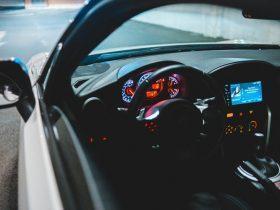This is a summary of the article “From Parking lot to Paradise”, by Carlo Ratti and Assaf Biderman – Scientific American 317, 54 – 59 (2017). Carlo Ratti is director of the Senseable City Lab at the Massachusetts Institute of Technology and founder of the Carlo Ratti Associati design studio. Assaf Biderman is an inventor, associate director of the Senseable City Lab and founder of Superpedestrian, a company focused on developing robotic vehicles for single and double occupancy.
Cars and Cities have a complicated relationship. Today, plagued with swelling road congestion and rising air pollution, we tend to think of the two as increasingly incompatible. But during the 20th century the automobile left one of the most durable marks on city planning. As Swiss-born architect Le Corbusier declared in his seminal 1925 book The City of Tomorrow and Its Planning, “The motor-car . . . has completely overturned all our old ideas of town planning.” Almost 100 years later we are at a similar turning point. First, demand for urban transportation is expected to more than double by 2050, which means that we will need to more than double capacity on the roads just to keep congestion at the (often unacceptable) levels we experience now. Second, thanks to the rapid convergence of information and communication technologies, robotics and artificial intelligence, our mobility systems—cars, buses and other forms of transportation—are undergoing massive transformations. Once again, they stand poised to radically reshape the urban landscape. Self-driving (or autonomous) vehicles are leading the charge. In recent decades cars have shifted from the kinds of mechanical systems Henry Ford might have recognized to veritable computers on wheels. The average car is now equipped with an array of sensors that collect internal and external data to help it run safely and efficiently. Autonomous cars will free up much of the time we spend every day driving, and they will make our roads safer. They are going to be game changers for our cities but in ways that are far from decided.
The Sharing Economy.
On average, cars sit idle 96 percent of the time. That makes them ideal candidates for the sharing economy. The potential to reduce congestion is enormous. A handful of car-sharing systems are already having a major impact on the total number of vehicles in our cities. Scholars have estimated that every shared vehicle removes nine to 13 privately owned cars from the streets. The benefits will grow exponentially as autonomous vehicles, currently available in experimental forms, gain a notable portion of the market, blurring the distinction between private and public modes of transportation. “Your” car could give you a lift to work in the morning and then, rather than sitting in a parking lot, give a lift to someone else in your family or to anyone else in your neighborhood or social media community. As a result, a single vehicle could go from one to 24 hours of use a day. A recent paper by our colleagues at the Massachusetts Institute of Technology reports that, under such conditions, the mobility demand of a city like Singapore—host to one of the world’s first publicly accessible fleets of self-driving cars—could be met with only 30 percent of its existing vehicles. In addition to vehicle sharing, autonomy could open up a new wave of ride sharing. Already applications such as Via, uberPOOL and Lyft Line allow different people to share the same ride, cutting operating costs and individual fares. Autonomy could boost ride sharing even more because all trips could be managed online. In cities, the potential for ride sharing is significant, based on analyses by our Senseable City Lab at M.I.T. New York City, for example, is eminently shareable. Our lab’s HubCab project gathered data from 170 million taxi trips involving 13,500 Medallion taxis in the city—specifically, the GPS coordinates for all pickup and drop-off points and corresponding times between the two. We then developed a mathematical model to determine the potential effect of ride sharing applied to those journeys. The project introduced the concept of “share-ability networks,” making it possible to optimize the trip-sharing opportunities. Our quantitative results revealed how taxi sharing could reduce the aggregate number of cars by 40 percent with only minimal delays for passengers. Further work showed that places such as San Francisco, Vienna and Singapore could benefit in similar measure. Combine car sharing and ride sharing, and a city might get by with just 20 percent the number of cars now in use, with its residents traveling on-demand. Of course, such reductions are theoretical. In real life, they would depend on how willing people are to share rides and adopt self-driving technology. But any drop in the number of vehicles could lower the costs and energy associated with building and maintaining our mobility infrastructure. Fewer cars might also mean shorter travel times, less congestion and a smaller environmental impact. It is worth noting that such an enticing vision depends on more than just autonomous cars and smart traffic-management systems. It also requires much better market coordination. Today’s car-sharing companies have independent platforms that do not talk to one another. Customers cannot compare options easily, and drivers cannot benefit from aggregated demand. In cities, two approaches could create a similar mobility architecture. The first would be a bottom-up effort in which small players start adopting standards. This is beginning to happen with a collaboration among Lyft, Didi Chuxing in China, Ola in India and GrabTaxi in Southeast Asia. The second effort would be top down, led by a government or a global organization, such as the World Wide Web Consortium. Because transportation services are already heavily regulated in most countries, this would not be too far-fetched. Either approach could create an incredibly powerful and transparent platform for transportation and logistical services.
Please, read the full article at: http://senseable.mit.edu/papers/pdf/20170627_RattiBiderman_ParkingParadise_ScientificAmerican.pdf















